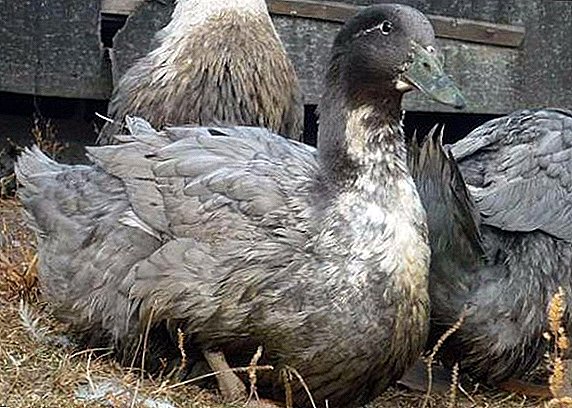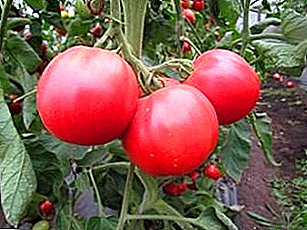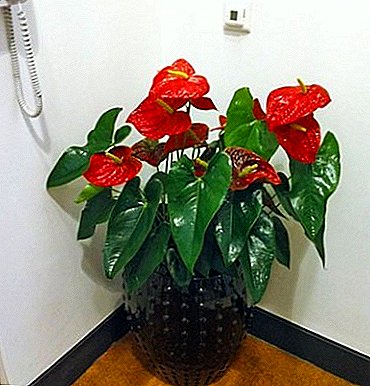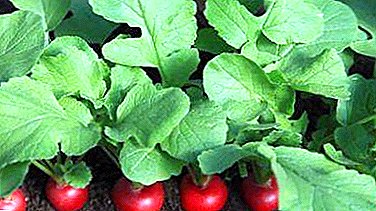
In early spring, gardeners are already striving to get the first yields of vitamin vegetables. A vivid example of early ripening is radish.
Three weeks of hard work is enough to gather high-quality crunchy crops, but you should not forget about competent agrotechnology of cultivation.
Further in the article we will provide visual photos of different varieties of radish and tell you how to care for this crop.
What does early sowing mean?
Early sowing is planting vegetable crops with the start of thaw on the beds, taking into account the excellent growth of the radish in conditions of short daylight hours, cold tolerance of crops, early ripeness of varieties, and the use of covering materials if necessary.
What time should be planted radish?
The best period for planting radish in open ground is the end of March or the beginning of April. Sudden frosts (up to -5 degrees) radish are not afraid. For optimum sowing dates, the average air temperature is taken into account:
- Radish shoots appear on day 4 with an average temperature in the range of +18 to +23 degrees.
- For 7 days, the seeds will sprout at average temperatures from +10 to about +17 degrees.
- The longest time is to wait for shoots at temperatures up to +10 degrees.
How to sow a vegetable seed in open ground in March?
How to choose a grade and why?
For spring planting use early ripe radishes. Vegetables ripen in three weeks. Popular varieties for early plantings include:
French breakfast

The crop of tasty cylindrical root crops receive already for 23 day. In red-raspberry vegetables, the tip is painted white. The taste is weakly sharp.
Heat

Variety ripening from 18 to 20 days. Radish grows rounded, red-raspberry, with a tender, juicy, tangy pulp.
Carmen

Rounded vegetables, ripen on the 20th day after sowing. The color is red, the taste is slightly spicy.
18 days

Radish radish with oblong-cylindrical shape, pinkish color and white tails. White pulp has a dense structure, and the taste is weakly sharp.
Sora

Early Dutch appearance. Red radish ripens in 20-25 days after sowing. The main advantage of the variety is the absence of strelkovaniya even with a long sunny day. It is characterized by high yield, transportability, resistance to diseases.
Advantages of early ripe varieties of radish - resistance to fungi, viruses, damage by worms.
Where and for how much seed can be bought in Moscow and St. Petersburg?
It is recommended to buy seeds of early ripe radish in special packages and only from trusted manufacturers. In Moscow, a wide range of planting material for root crops for planting in March is offered, for example, by shops:
- Internet hypermarket "Empire Gardener". There is a range of English seeds "18 days" at a price of 39 rubles. per pack. Available varieties: "Heat", "Carmen", "French Breakfast" at 10 rubles. per pack.
- "Harvest bed" (st. General Belov, 51, building 1A). Offer seeds agro-firm "Sedek" (an average of 17 rubles. Per package).
- "Moscow lawns" (st. Leo Tolstoy, 5, p. 1). For example, the proposed assortment of radish "18 days", a package weighing 3 g at a price of 16 rubles.
In St. Petersburg, too, a large trading network. There are offers from such stores:
- Internet hypermarket "Empire Gardener". You can buy seeds "French breakfast" (Gavrish) at the price of 104 rubles. for 50 g
- "Garden and Seeds" (street Podolskaya, 26). A wide range of varieties: "Heat", "Early Harvest", "Early Red" (for 2 g - 20 rubles.). You can buy radishes "French Breakfast" (for 5 g - 25 rubles.). Under the order deliver a grade of "18 days".
- Internet-shop "Agroholding" offers a wide range of early varieties. For example, radish "Carmen" (a pack weighing 3 g costs 16 rubles).
On average, bulk purchases in stores - from 30 packets of seeds. Delivery within 200 rubles. by region.
Grain preparation
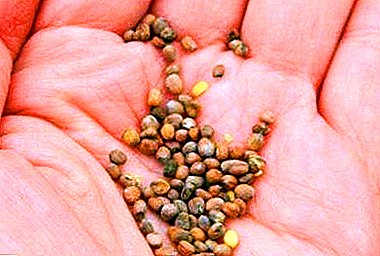 Planting material is soaked in saline solution (50 g of substance per 1 liter of water), the floating grains are rejected.
Planting material is soaked in saline solution (50 g of substance per 1 liter of water), the floating grains are rejected.- The remaining wet seeds are disinfected in potassium permanganate (1% solution) for about 14 minutes, then washed in water, dried. You can soak the seeds in growth promoters "Zircon", "Appin".
- Before early plantings at the end of March, it is recommended to harden the grains. Wrapped in a damp cloth, the seeds are left for a day in a warm place, and then shifted for 4 hours in the refrigerator, removed, put again in heat. Conduct such an alternation of temperatures until the grains germinate.
How to plant?
- Before sowing it is necessary to make furrows on the beds, which are well moisturized. The soil should be loose.
- The distance between the rows is recommended to do 18-20 cm, between plants - 2 cm.
- Seeds are buried in the soil by 2-2.5 cm. If the structure of the soil is very light, then it can be planted up to 3 cm. The embedment depth is reduced on heavy soils.
- Garden radish lay individually, gently sprinkle. Sowing under a special marker will eliminate the need for further thinning plants.
- The beds are watered, covered with a film, until the first shoots appear. Only then the shelter is removed.
We offer to watch a video on how to plant radishes in early spring:
Care for a young plant
A week after the emergence of germs begin weeding.which is repeated at intervals. Conduct regular sprinkling (or watering) of seedlings. Water used for warm watering. In the dry season irrigate crops daily.
The procedure is performed sutra or in the evening. Top dressings do organic and mineral substances. Manure is only brought in from the fresh air - plants will go to the arrow. After the fertilizer, plantings are mulched with peat so that the soil is more airy.
Possible problems with growing
 Difficulties in the cultivation of early vegetables can occur when the wrong site for planting. For crops of radish, they dig up the place since autumn.. If this is not done, the soil will be too heavy, this will make seed germination more difficult.
Difficulties in the cultivation of early vegetables can occur when the wrong site for planting. For crops of radish, they dig up the place since autumn.. If this is not done, the soil will be too heavy, this will make seed germination more difficult.
You can not choose a planting beds, where cruciferous crops were harvested, radishes can be subject to diseases:
- powdery mildew (prevents treatment with fungicides);
- Kiloi (struggle - removal of the affected crops, introduction of lime, break in plantings at this place for 4 years);
- bacteriosis (excluded by spraying Bordeaux mixture).
The problem of thickening of plantings is typical in the case when the wrong distance was selected (less than 2 cm) when sowing seeds. The reason for shooting is incorrectly chosen landing dates when the daylight hours and air temperature increase.
Important! Lack of moisture - the reason for the lack of ovary, rifle, fibrous, bitter, hard radish. Moisture can be retained on the beds, mulch planting. An excess of watering can lead to decay of vegetables.
March planting - a pledge of obtaining early radish on garden beds. It is important to choose early ripening varieties, a good plot that has been treated since autumn, to organize technically correct plantings and seedling maintenance. Properly applying agricultural techniques, they grow juicy, crunchy, tasty root vegetables.


 Planting material is soaked in saline solution (50 g of substance per 1 liter of water), the floating grains are rejected.
Planting material is soaked in saline solution (50 g of substance per 1 liter of water), the floating grains are rejected.